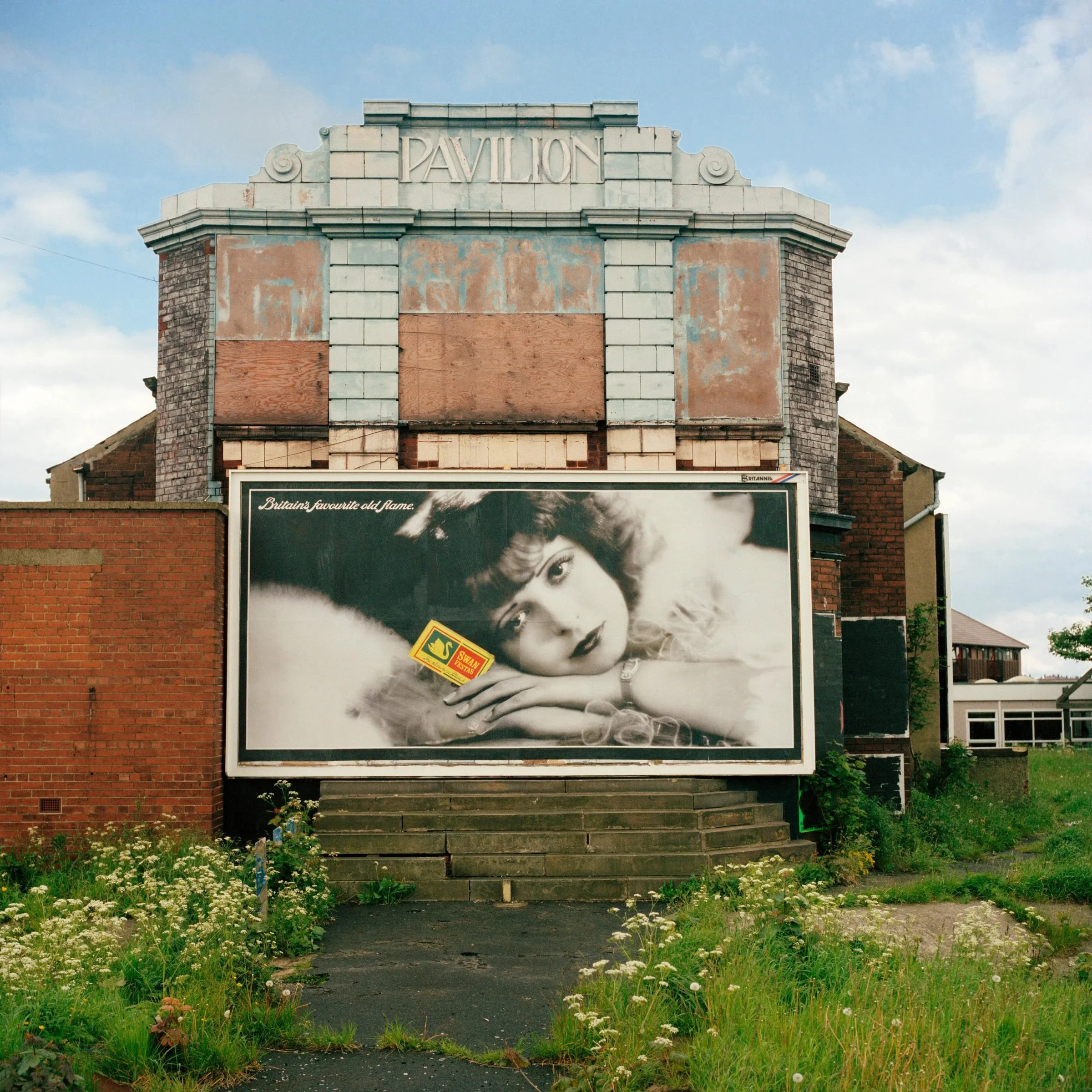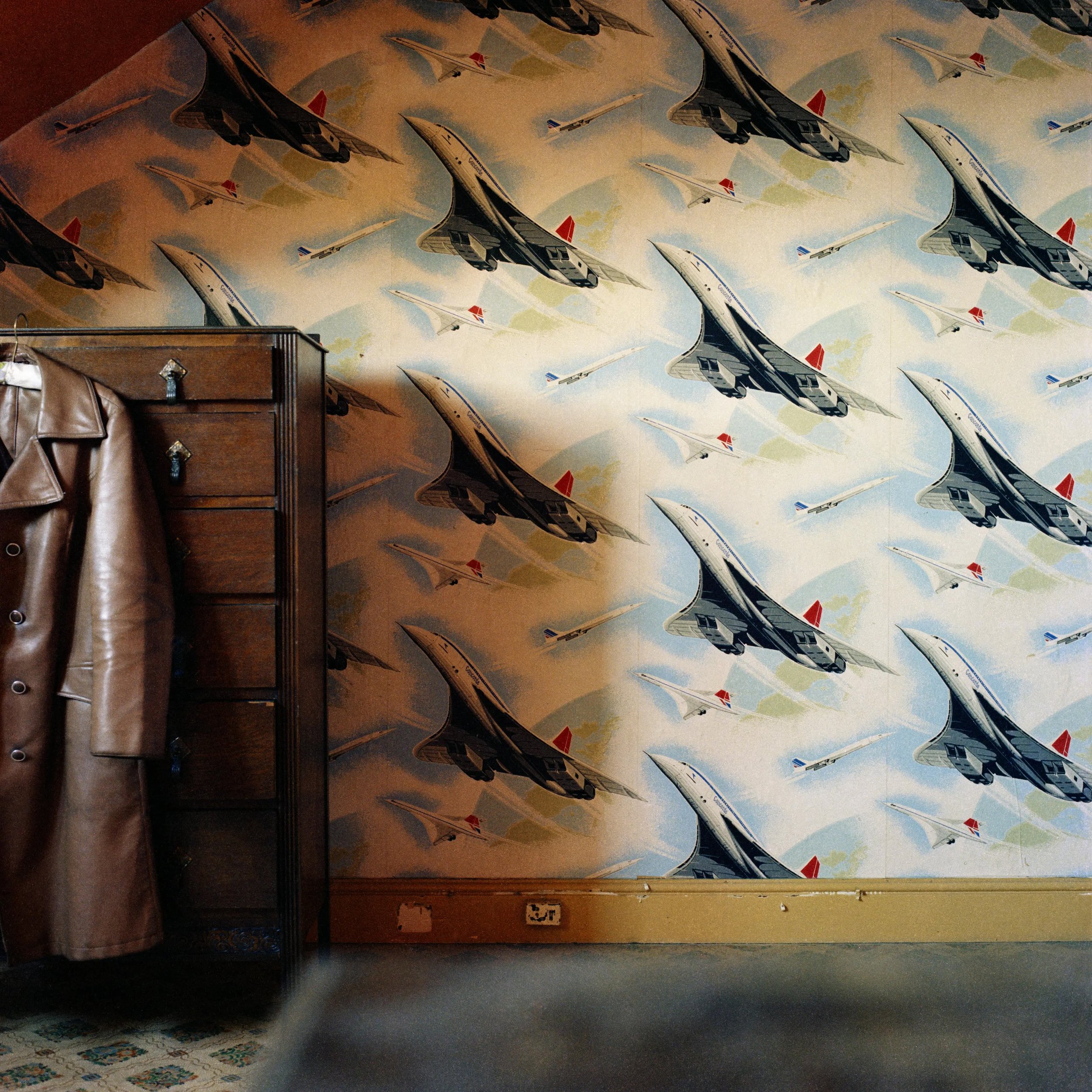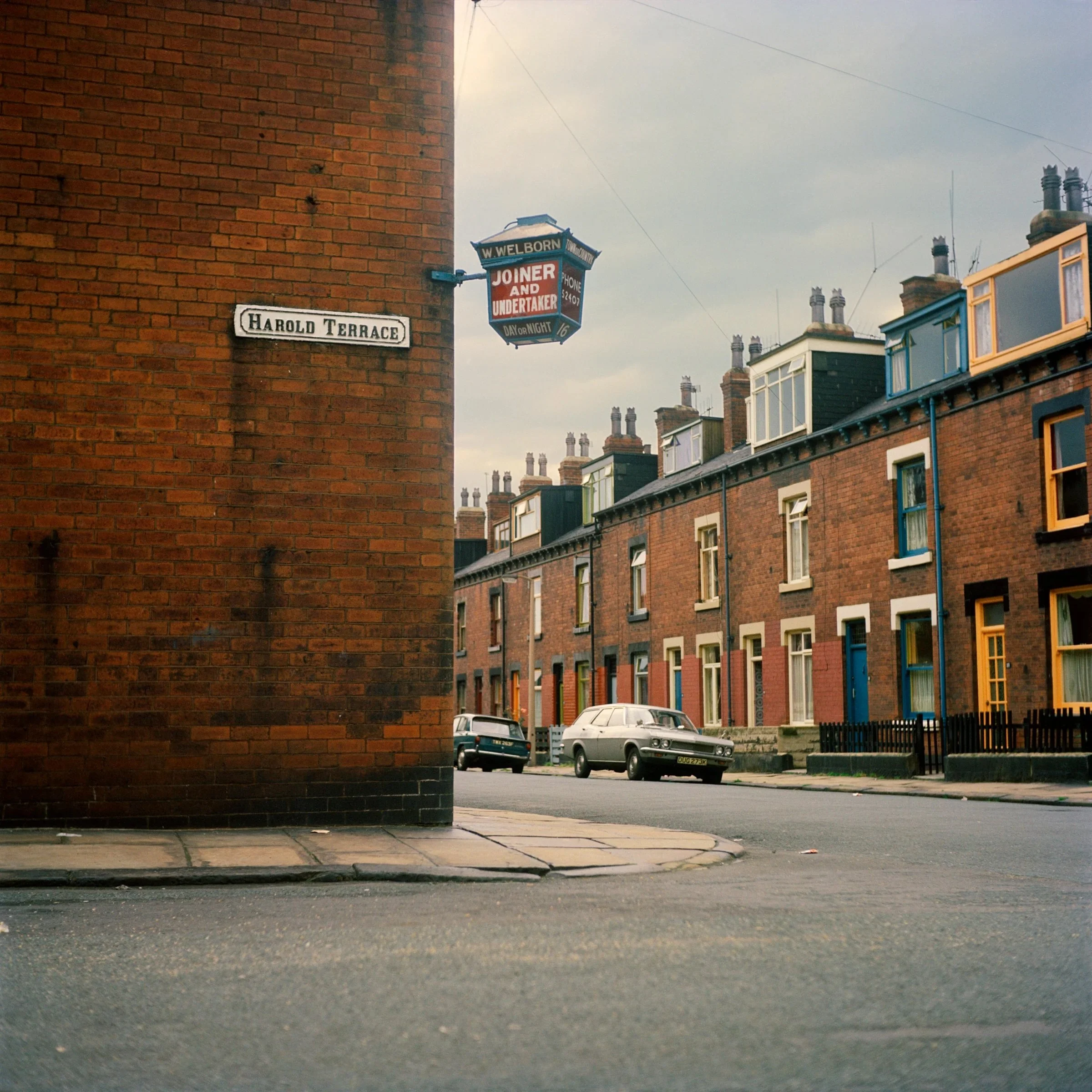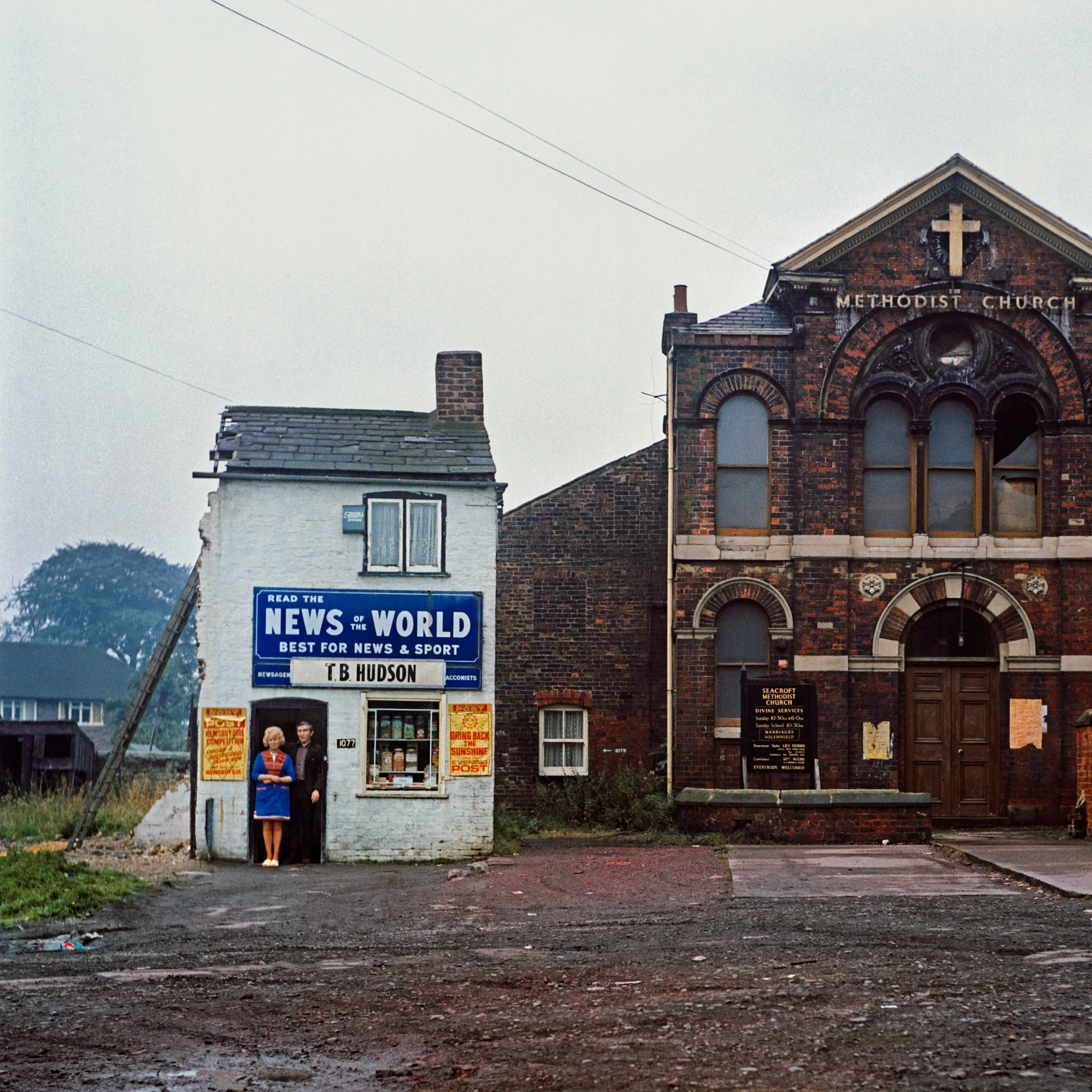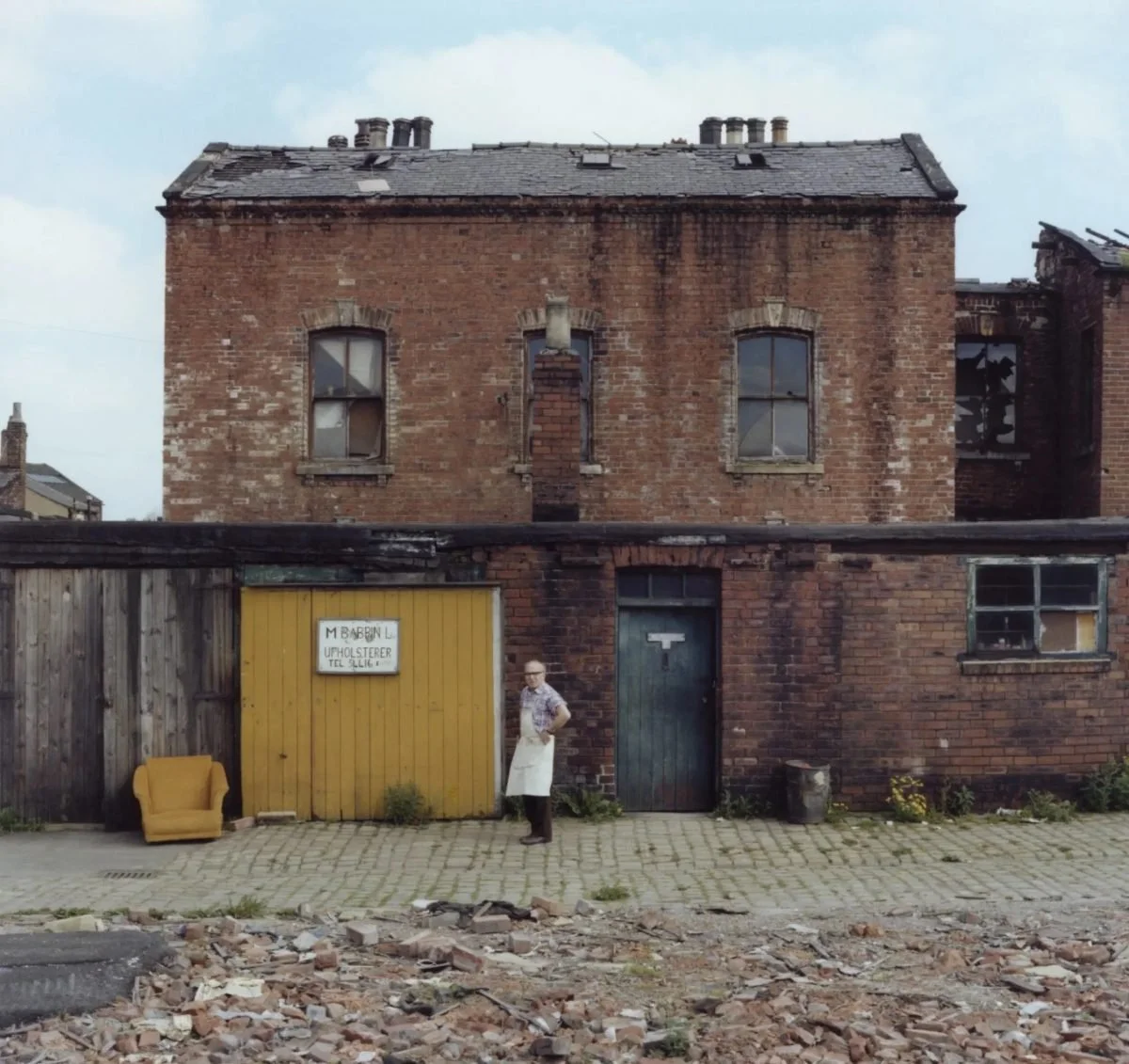
Peter Mitchell: Capturing the Quiet Decay and Resilience of Post-Industrial England
PETER MITCHELL Francis Gavan, Ghost Train Ride, Woodhouse Moor, Leeds, Spring 1986
Images Courtesy of The Photographers Gallery
Through haunting black-and-white and muted colour photographs, Mitchell reveals the unvarnished humanity and fading landscapes of Leeds and the North East in the 1970s.
Peter Mitchell, The people of Kingston Racing Motors, Olinda terrace, Leeds, 1975
Billboard on the side of the Pavillion Cinema, Stanningly Road, Leeds, 1986
Peter Mitchell’s photography is one of those curious artifacts that you think you get immediately, only to discover you don’t, not really. His colour and black-and-white images from the North East of England and Leeds in the 1970s—captured mostly in the post-industrial lull after coal mines had closed but before gentrification’s slow creep—offer what looks like a straightforward documentary archive. But that description barely scratches the surface.
Though his monochrome photographs have often garnered more attention, it is Mitchell’s colour work that reveals the full depth of his vision. These muted, sometimes murky hues capture the grit and grime of Leeds and the North East with an almost painterly attention to tone and texture. Colour here is no mere decoration—it is integral to the mood, a vivid reminder that decay and resilience coexist in every rust-stained brick and fading billboard. It’s in these subtle chromatic choices that Mitchell transforms the ordinary into something almost elegiac.
Take, for example, the nuanced tones in his image of a lone dog curled on cracked pavement or the fading hues of a dilapidated pub sign flapping in the wind—scenes that seem mundane but carry an existential heft. The colour photographs offer a richness and complexity that black-and-white can’t quite match, giving life to surfaces that might otherwise read as flat or lifeless.
Mitchell’s approach is, in many ways, antithetical to the glossy photojournalism or Instagram-ready cityscapes flooding our feeds today. His colour photographs lack the conventional “wow” factor; instead, they insist you lean in, squint a little, and maybe feel a bit awkward about the world they reveal. There’s a raw honesty, a refusal to prettify, that forces you to reckon with the imperfect humanity on display.
Concorde Wallpaper, Devon Road, 1970s. From the series Early Sunday Morning
Harold terrace, Leeds, 1970s
And it’s not just the content but the formal qualities: the grainy textures, the deep shadows, the odd angles. You can almost hear the shutter clicking in a pub doorway, smell the damp concrete, taste the grit. The work doesn’t whisper—it murmurs, it broods, it sometimes snarls.
A signature element in Mitchell’s work is his use of a ladder, which he employed to gain unusual perspectives and vantage points. This elevated viewpoint allows him to capture Leeds and the North East from unexpected angles—revealing architectural details, street patterns, and overlooked juxtapositions that ground his work in a spatial as well as emotional landscape. The ladder becomes both a literal and metaphorical tool to transcend the mundane, offering a fresh way to see what many consider ordinary or forgotten.
One lesser-known anecdote from Mitchell himself captures his instinct for observing the overlooked. He once recounted wandering the streets of Leeds when he stumbled upon a peeling, half-hidden mural advertising a now-defunct local brewery. To most, it was just a weathered relic; to Mitchell, it was a palimpsest of community memory, a signifier of vanished livelihoods and vanished time. He photographed it obsessively until the fading light finally forced him to move on. It’s that obsessive attention to detail and respect for the ephemeral that defines his work.
Which is to say, Mitchell’s “Nothing Lasts Forever” isn’t just a photography exhibition. It’s a quiet act of cultural archaeology, an insistence that even places slipping toward oblivion deserve to be remembered with nuance and care.
Mr. and Mrs. Hudson, by the old Seacroft Chapel, York Road, Leeds, 1974
Max Babbin, Vulcan Street, Leeds, 1979
This rare honesty has also found recognition beyond the gallery walls. In recent years, Mitchell’s prints have begun surfacing at auction, attracting keen interest from collectors eager to own fragments of a disappearing England. Though not yet commanding the sky-high prices of some contemporaries, his work has steadily appreciated, with several limited-edition prints fetching notable sums in London auction houses during 2023 and 2024.
This emerging market enthusiasm underscores a growing appreciation for his unvarnished vision—proof that the photographic testament to the North East’s fading industrial landscape resonates well beyond its original context.

"Mitchell’s lens doesn’t just record a place—it listens to its silence, revealing the stories whispered by streets and shadows soon to vanish."
Francis Gavan, Ghost Train Ride, Woodhouse Moor, Leeds, Spring 1986


